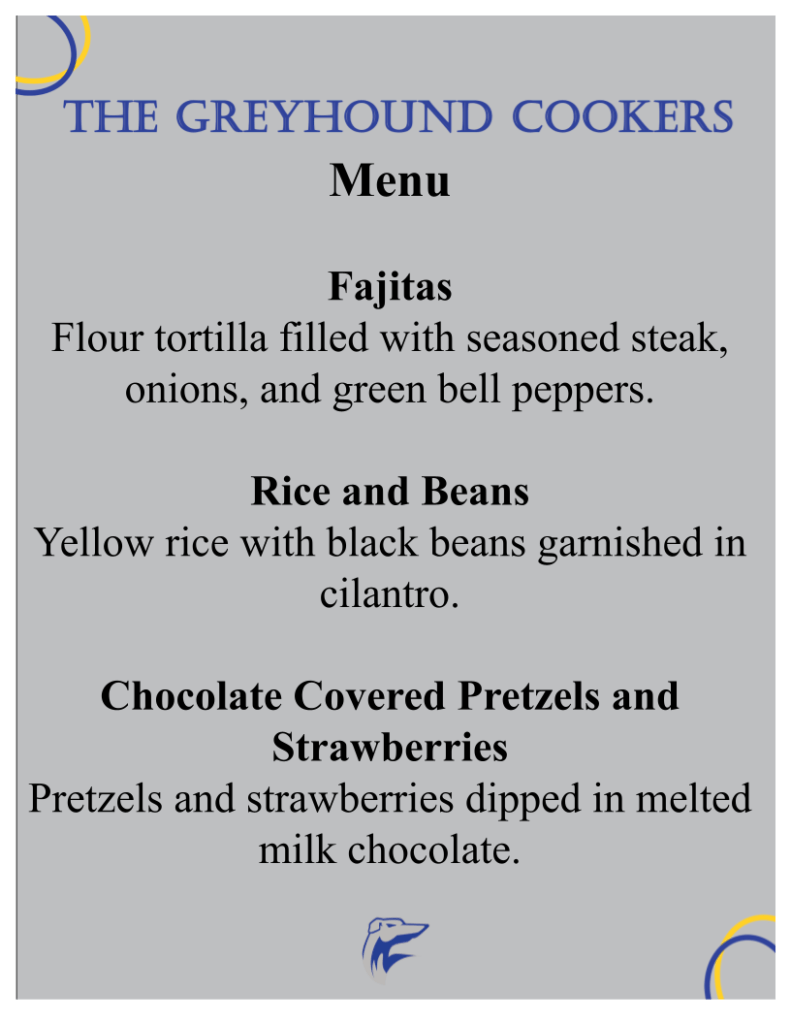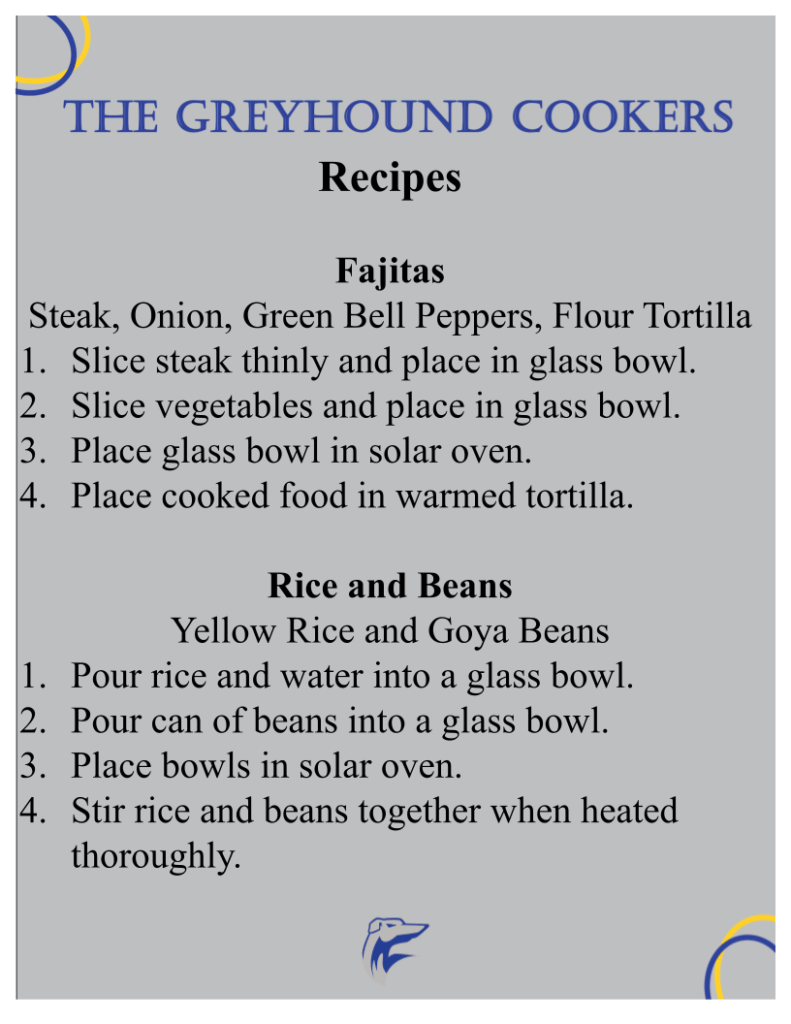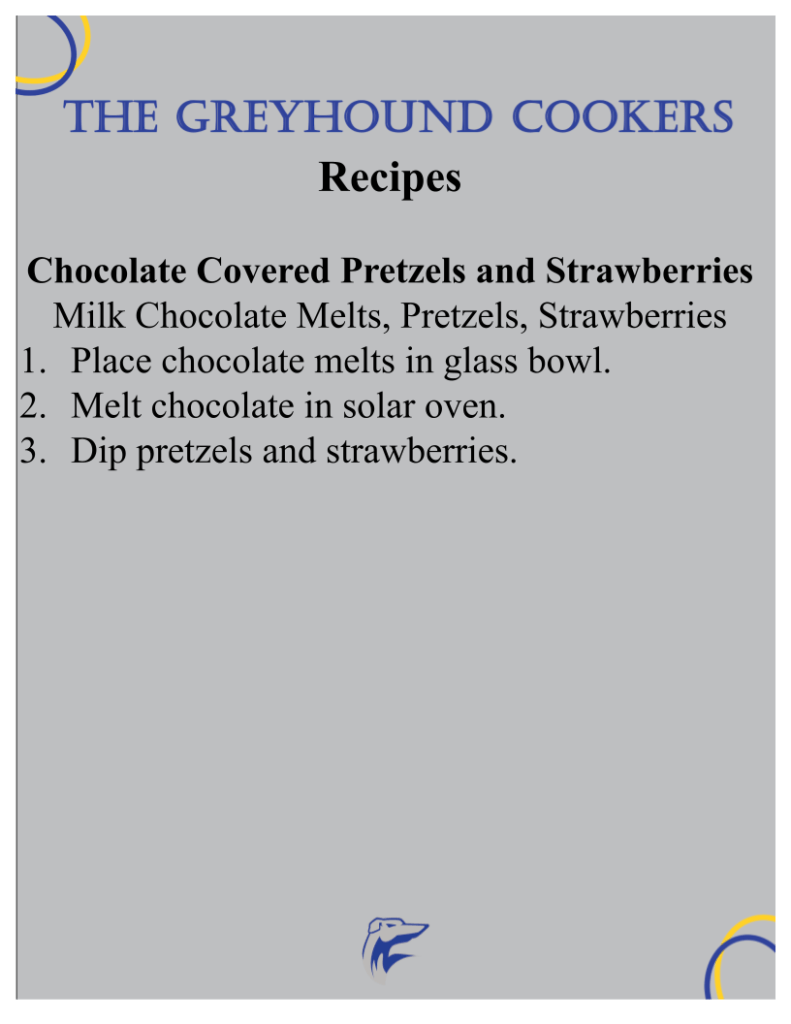The Greyhound Cookers
Event Location: Cocoa-FL
Competition: Solar Energy Cook-Off
Division: 9-12
School: Lyman High
Team Size: 2
Lyman High School
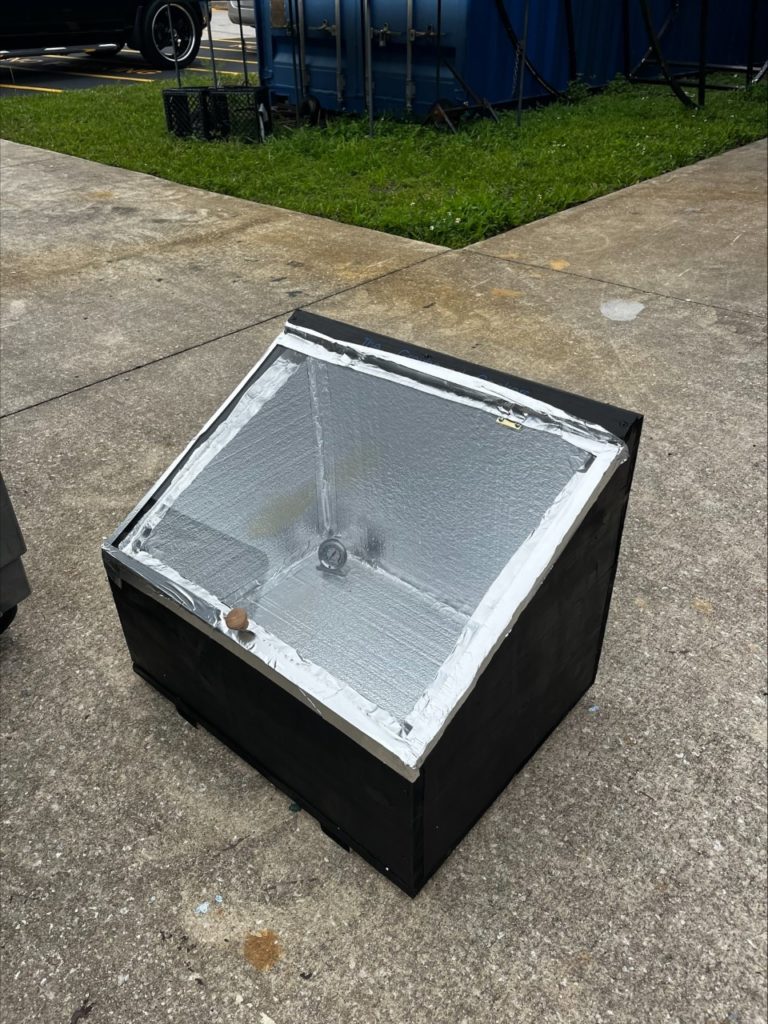
About the Cooker
When designing this solar oven, we discussed many possible solutions. We decided on our final solution and started constructing our first design using recycled materials. Our initial design of a black wooden base insulated using foam based upon our research of past entries as well as videos about the science behind making an efficient solar oven.
Meet the Team
Chad B. – 11th
Samantha P. – 9th
Chad has competed in Energy Whiz’s Solar Car for 4 years, with multiple first place finishing.
Samantha has competed in Energy Whiz’s Solar Oven for 2 years, with a 3rd place finishing overall, a 2nd place finishing for design, and a 1st place finish in culinary.
Lyman High School has competed in this competition for the past 8 years, including first place finishing in all categories last year.
Behind the Design
The main strengths of our oven in this competition come from its ability to retain heat. This is due to a combination of both its compact size and efficient use of R() insulation. With a black outer box made from pinewood for heat retention, lightweight transportation. This outer shell is colored black in order to absorb heat from the Sun. Heat absorption occurs because all wavelengths of light get transformed from their natural state into thermal energy. The acrylic glass door allows for an almost ten fold heat collection and (retention synonym). In the grooves between our pieces of insulation in order to seal off anywhere for the heat to escape, we used Thermaflect tape for its insulating properties.
PLTW Design Process
At Lyman High School’s Academy of Engineering, we are taught the PLTW Engineering Design Process. This iterative process is a six step insurance that you get the best prototype and results possible for your stated problem.
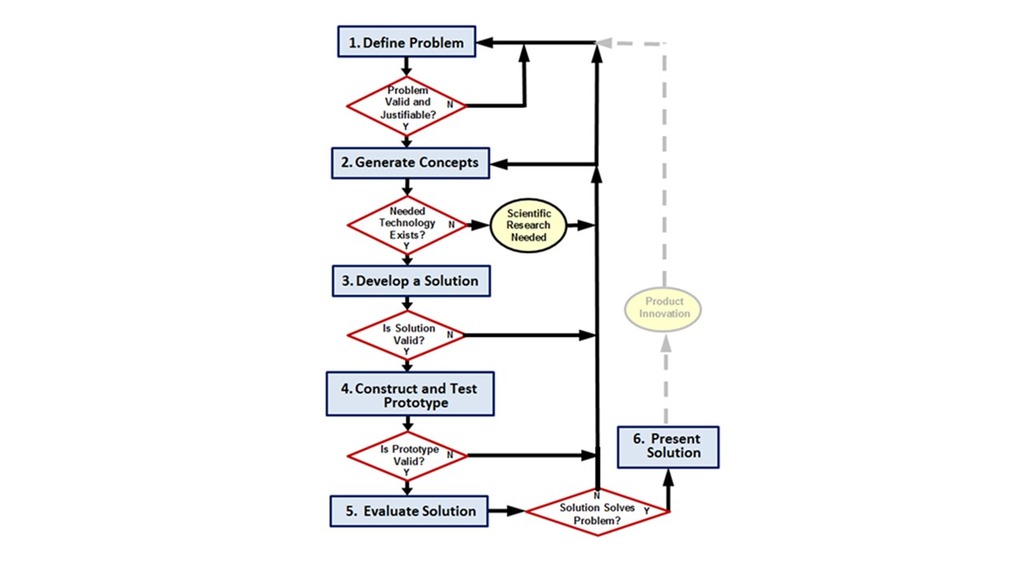
To reach our final design, we first discussed the task assigned to us. We interpreted this task as needing to build the most effective and efficient solar oven cooker for our cuisine. We then researched past entries and project as well as how a solar oven works. Using a decision matrix, we decide on our final solution. We then started construction our solar oven. Upon completion of the solar oven, we tested our prototype to find areas of improvement. After evaluating our testing, we strengthened our weaknesses and took our oven to Energy Whiz.
Materials
Pine Wood– We used 10.33ft^2 of wood with a thickness of 3/4 inch to build the structure of our solar oven. This lightweight, easy-constructible material makes for a great insulator.
Acrylic Glass– We used 3.083 ft^2 of acrylic glass with a thickness of 1/12 inch to create the door to retrieve our meal. We chose this type of glass due to its insulating properties.
Foam Insulation– We used 10ft^2 of insulation with a thickness of 1 inch for optimal heat retention and reflection of light towards our cooking surface.
Black Paint- We used black paint to paint the wood to attract heat.
Thermaflex Tape- The tape was used to bind the insulation and seal the door of our solar oven.
Wooden Knob- We attached a wooden knock to open the door.
Hinges– We used hinges to allow the door to open and shut.
Screws- We used screws to connect all of our materials.
Thermometer– The thermometer allows us to see how hot our solar oven gets.
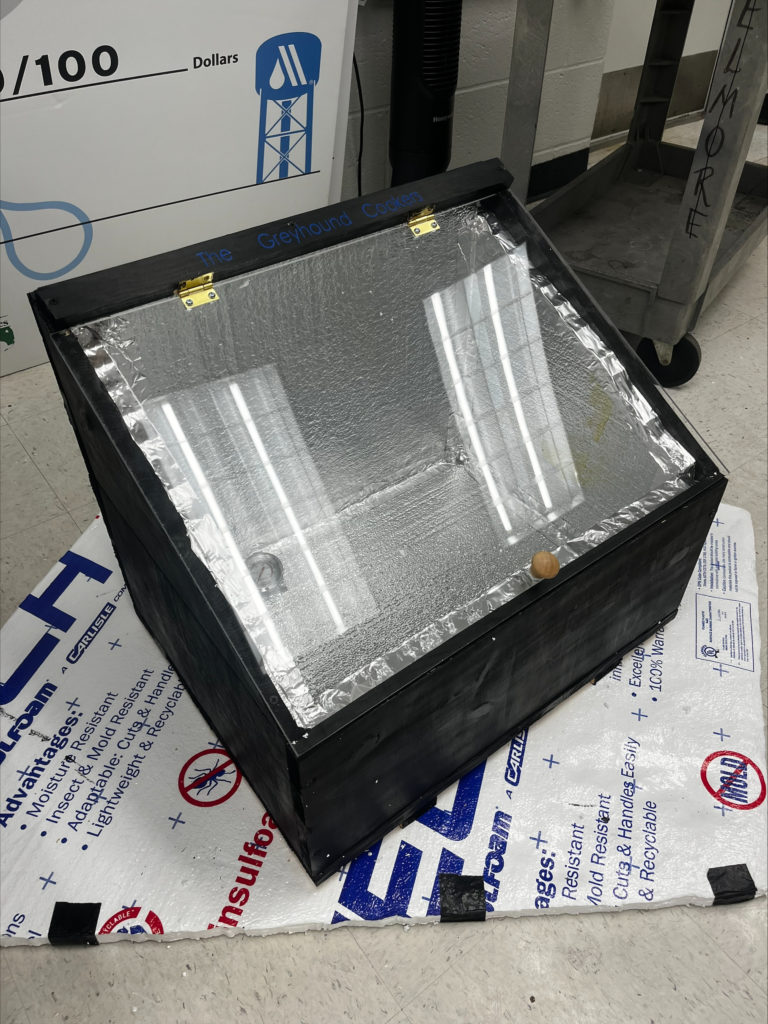
All materials were donated to Lyman High School or recycled from previous projects and donations.
The Building Process
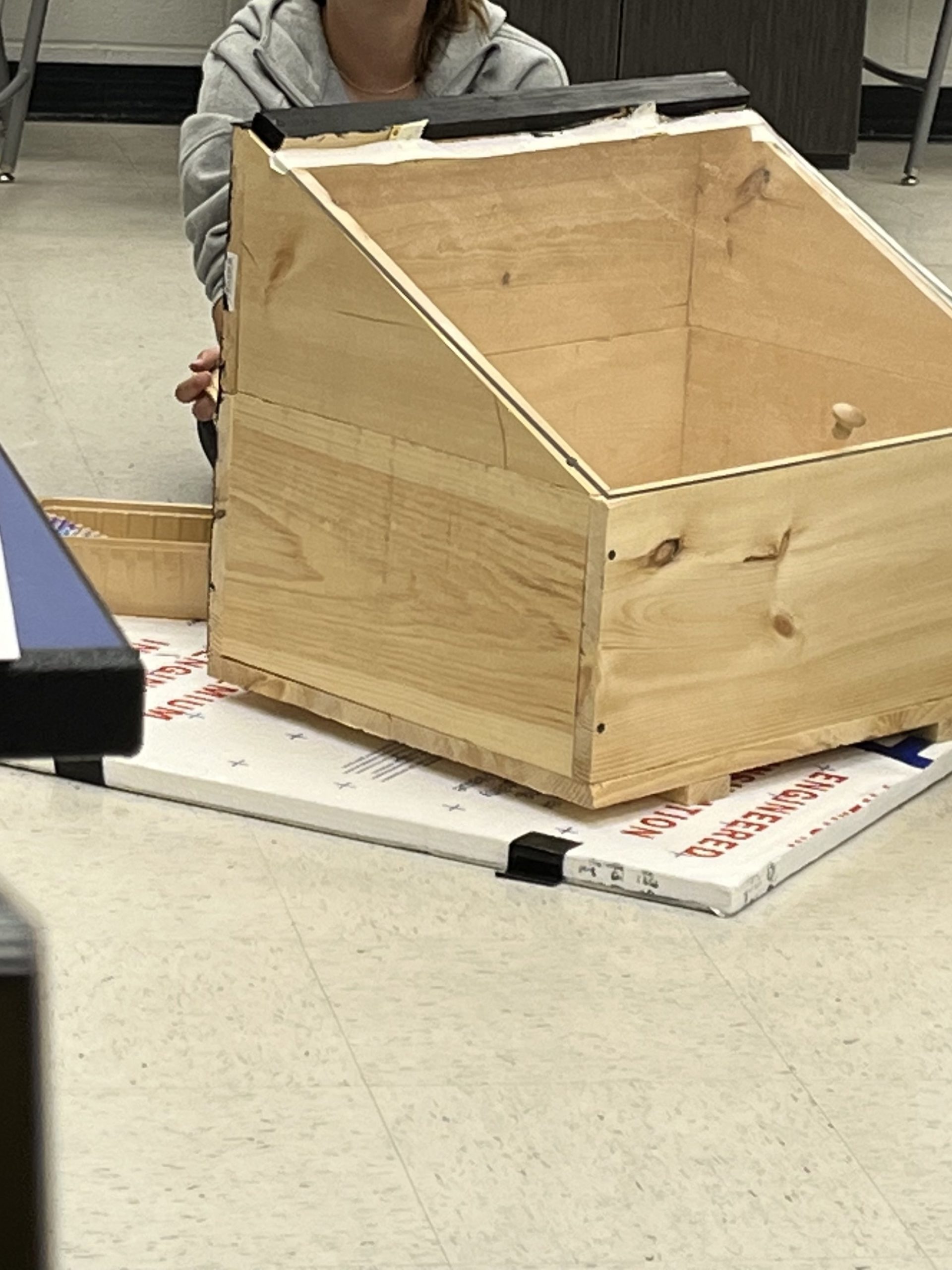
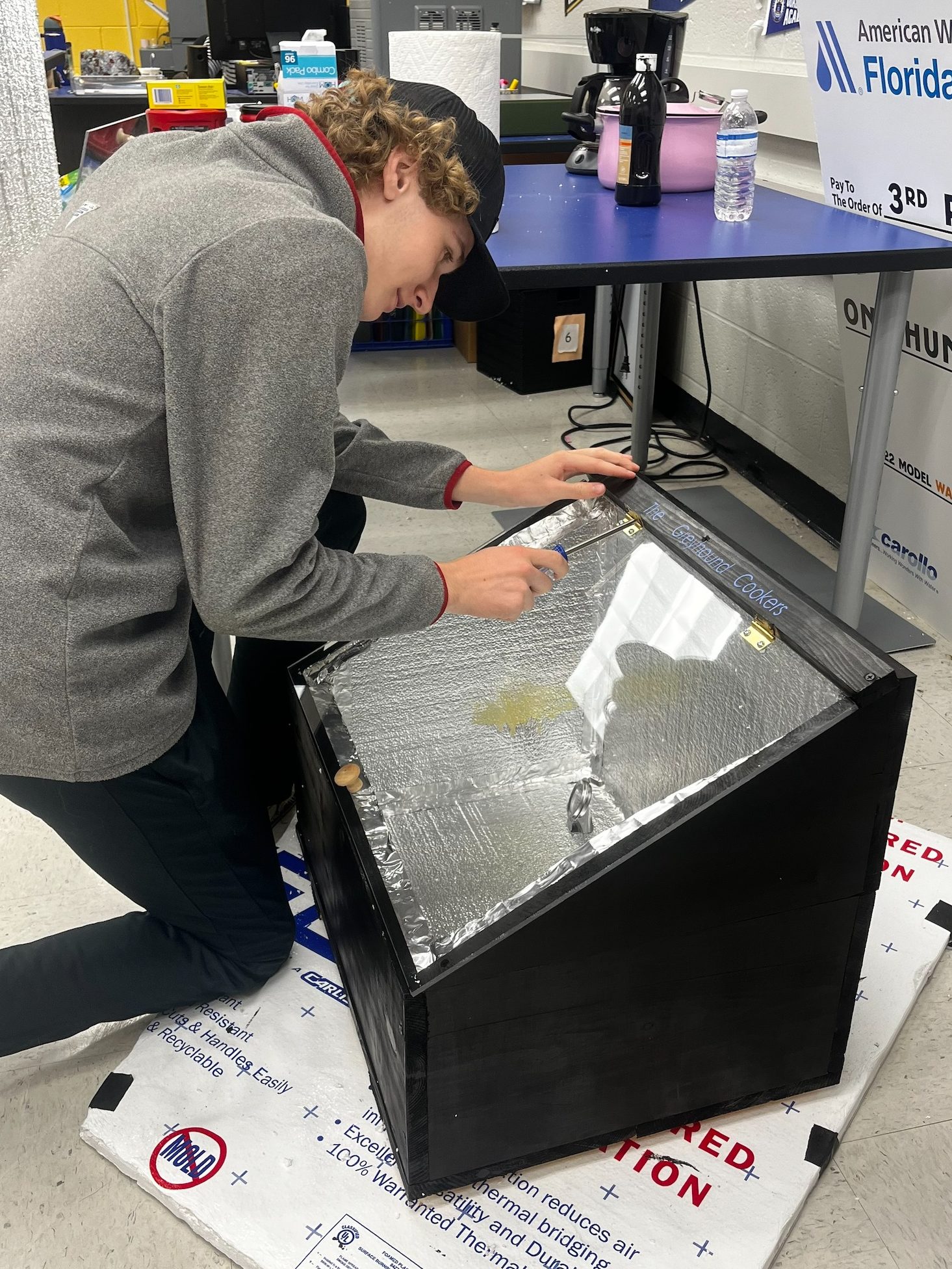
Testing
Procedure
- Construct oven.
- Prepare your meal.
- place meal in pot or pan.
- Place cookware in solar oven.
- Seal solar oven using thermaflex tape.
- Put oven in sunny area.
- Wait until it reaches your desired temperature.
- Retrieve food.
- Enjoy!
Results:
We tested our oven on Friday, April 14, 2023 in Longwood, Florida. The oven was in the sun from 7:20 am to 12:43 pm and reached a maximum temperature of 200 degrees F. The weather conditions were cloudy and rainy.
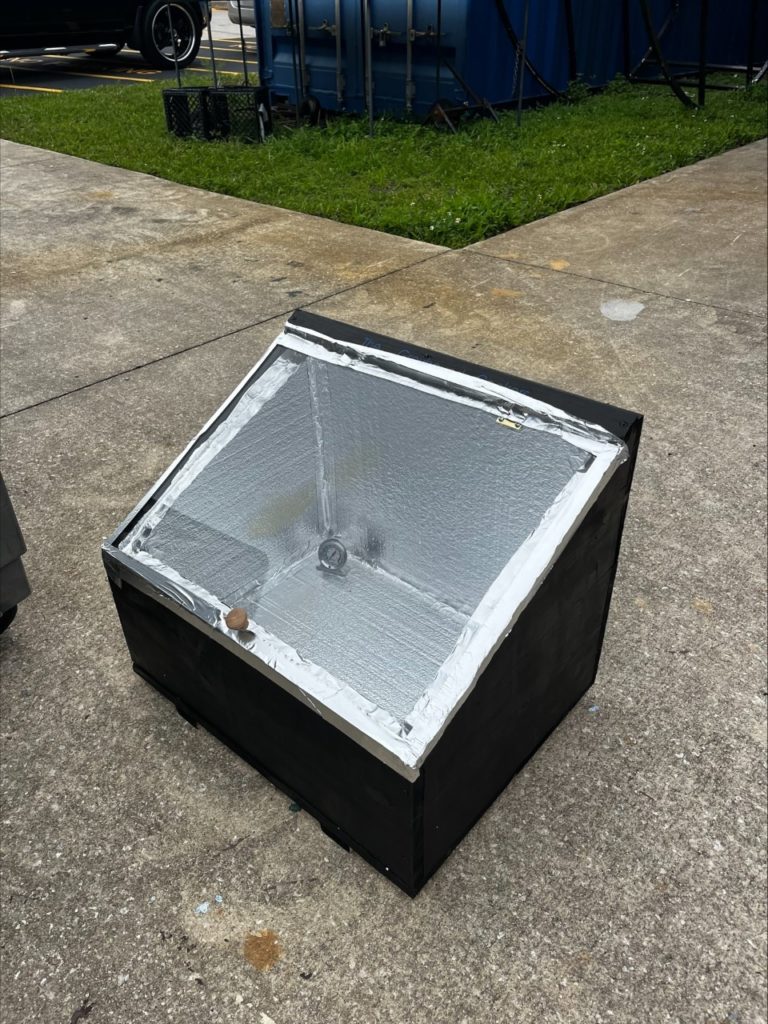
Conclusion and Recommendations
When using this oven, we recommend sealing the glass door extremely well. This will allow for optimal heat retention and allow your food to cooker in a shorter time.
